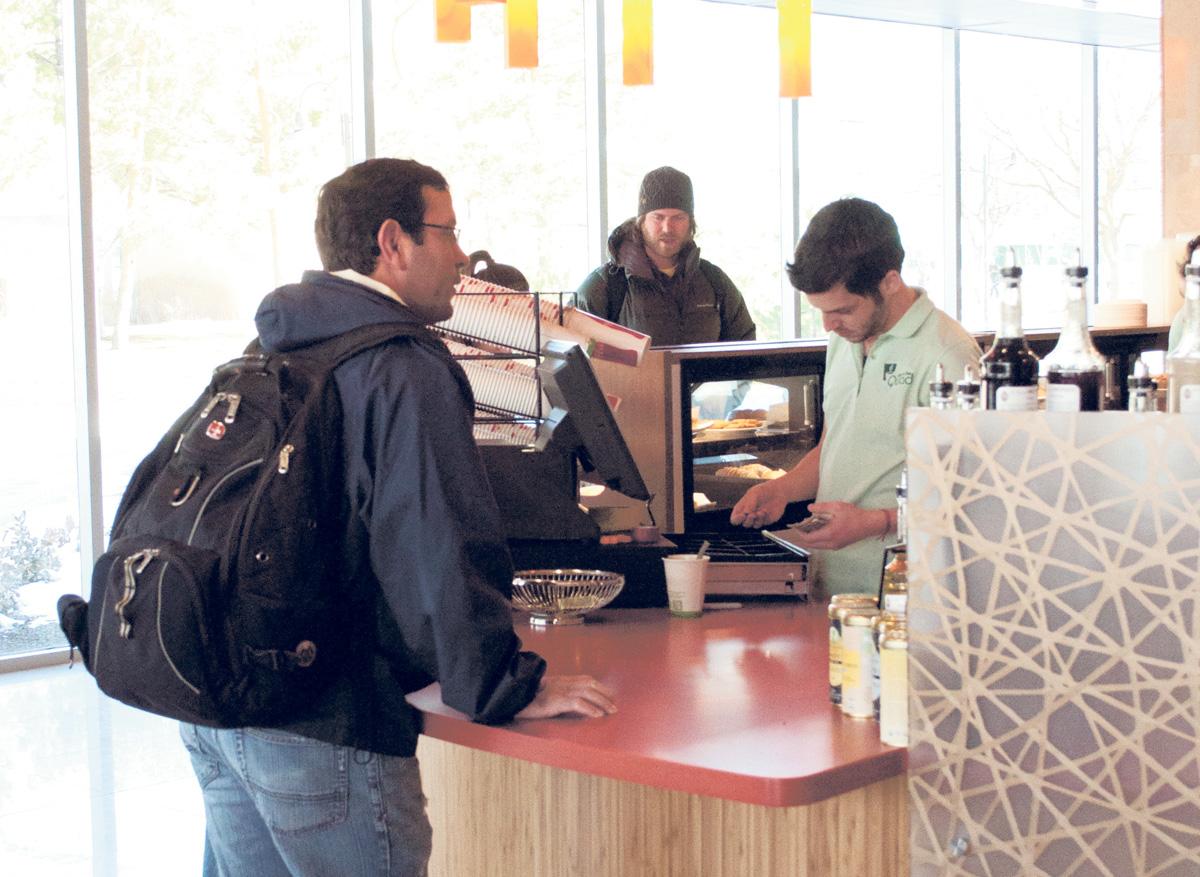COLUMN: The curious monopoly that is USU Dining Services
Dining Services has a sort of monopoly on campus. It owns all the restaurants, but the restaurants pick their business models and food prices separately. They are simultaneously in competition and cooperation to make as many sales as possible — but this hegemony is not as artificial as it may appear.
Dining Services is a special type of organization from Utah State called an auxiliary. It is not officially for profit, but for all intents and purposes it functions as a business and thus seeks profit. It also shares part of its revenue with the university, supplying human resources and the controller’s office with funds. It provides wages and salaries to its employees and attempts to offer affordable food for students, all while expanding without competing against itself. This odd relationship affects the prices customers see on the menu.
“The monopoly issue is an interesting one,” said Alan Andersen, executive director of USU Dining Services. “Years ago we offered space to downtown restaurants but no one was interested because they couldn’t make money on campus.”
Andersen cited the lack of diverse menu options across different mealtimes, or what are called “dayparts,” as one of the obstacles for profitability on campus.
“Some of our locations are not even breaking even, but overall Dining Services is able to make enough to reinvest and continuously improve,” Andersen said.
So what about profit?
According to Andersen, since Dining Services doesn’t “receive any money from tuition, fees, the state legislature in the form of tax revenues, or anything like that,” on-campus restaurants set prices relative to what’s available in town. Behaving “very much like a business would downtown,” Andersen said. Yet, Dining Services gives part of their profit to the university beyond its yearly $500k rent.
Ultimately, there are many contradictions in the way that Dining Services is organized and operated. Dining Services claims itself as not for profit while still seeking profit and expansion. It is part of the university, yet separate and independent. It competes with downtown businesses while being largely insulated from them physically. All these contradictions combine to set the price the way students see it.
This is a tricky situation for a food operation to balance, but it is difficult to imagine competition with downtown as a legitimate concern for food price justification. Is it realistic to imagine thousands of students flocking downtown, then back to campus each lunch and breakfast only to get a slightly cheaper meal or find a cheap apple? Or — even less likely — actually meal-prepping? Wouldn’t lowering some food prices incentivise students to purchase more food, rather than less of it?
Students may question food prices on campus, even find themselves scoffing at the obviously inflated prices. But should the university subsidize the food students pay for? Doesn’t the university get enough money from student fees, the state, loans and ever-rising tuition and fee prices? Couldn’t they give students a break at least in sustenance?
There could be a program, fee or subsidy that helps students with food on campus. A larger, more sophisticated Student Nutrition Access Center (SNAC) program could be funded and healthier food options could be reduced in price even by a fraction, but this would take action from students.
Andersen is open to these types of changes on paper. but he’s not optimistic that there is any will to provide cheaper food prices to students, and is not interested in curbing or modifying purchasing behavior. He is more interested in educating his customers.
“A dietician would be a great resource, especially to students with specific dietary concerns or issues,” Andersen said. “The dietician could also lend a lot more consistency to our efforts to provide nutritional information.”
As for the future, Dining Services is expecting to open up to three new locations and a remodeling of the Hub in the Taggart Student Center within the next year.
— Diego Mendiola is a junior writing for the Utah Statesman’s news vertical. Contact him with feedback at diego.mendiola.93@gmail.com.


I’m not sure I subscribe to the logic that says because certain students fail to do ‘x’, all students must pay more in order to provide them with ‘y’. The University upping its costs to provide for a small minority of students that are incapable or too lazy to provide food for themselves seems paternalistic in the wrong sort of way for “higher education”. The University’s purpose is to educate students in classrooms about subjects that they are voluntarily paying for. I don’t see how providing subsidized food falls into that realm, and it will result in a form of redistribution. That is the only plausible outcome.
On a different note, and in regards to the contradictions that you claim, I’m not sure that the information that you’ve provided us with here is sufficient in determining that the Dining Services are for-profit as apposed to non-profit (https://www.law.cornell.edu/wex/non-profit_organizations). If the revenue is split between the University (non-profit) and it’s own operations, that would draw the assumption that it operates more as a non-profit. Of course, there may be other factors, but they don’t appear to be presented here. Also, I don’t see how you can argue in good faith that Dining Services on campus compete with “downtown businesses”. Their operations have so little overlap to the vast majority of us. Practically nobody who buys some food on campus between classes would go downtown instead if the option weren’t available, and nobody who is going out to eat at night goes to eat on campus if they aren’t already there. Maybe if there were more restaurants like Morty’s, or a higher population in the dorms, or if the University upped it’s parking game so that students could easily come and go off of campus, but until then, just not seeing it.